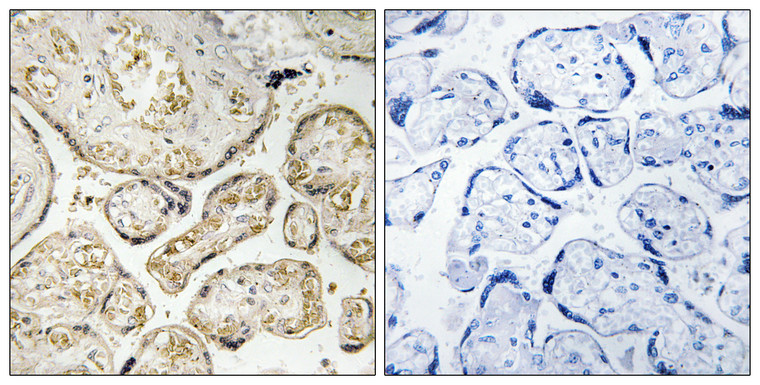| Host: |
Rabbit |
| Applications: |
WB/IHC/IF/ELISA |
| Reactivity: |
Human/Monkey |
| Note: |
STRICTLY FOR FURTHER SCIENTIFIC RESEARCH USE ONLY (RUO). MUST NOT TO BE USED IN DIAGNOSTIC OR THERAPEUTIC APPLICATIONS. |
| Short Description: |
Rabbit polyclonal antibody anti-DNA dC->dU-editing enzyme APOBEC-3D and DNA dC->dU-editing enzyme APOBEC-3F (232-281 aa) is suitable for use in Western Blot, Immunohistochemistry, Immunofluorescence and ELISA research applications. |
| Clonality: |
Polyclonal |
| Conjugation: |
Unconjugated |
| Isotype: |
IgG |
| Formulation: |
Liquid in PBS containing 50% Glycerol, 0.5% BSA and 0.02% Sodium Azide. |
| Purification: |
The antibody was affinity-purified from rabbit antiserum by affinity-chromatography using epitope-specific immunogen. |
| Concentration: |
1 mg/mL |
| Dilution Range: |
WB 1:500-1:2000IHC 1:100-1:300ELISA 1:40000IF 1:50-200 |
| Storage Instruction: |
Store at-20°C for up to 1 year from the date of receipt, and avoid repeat freeze-thaw cycles. |
| Gene Symbol: |
APOBEC3FAPOBEC3D |
| Gene ID: |
200316NA |
| Uniprot ID: |
ABC3F_HUMANABC3D_HUMAN |
| Immunogen Region: |
232-281 aa |
| Specificity: |
APOBEC3D/F Polyclonal Antibody detects endogenous levels of APOBEC3D/F protein. |
| Immunogen: |
The antiserum was produced against synthesized peptide derived from the human APOBEC3D/F at the amino acid range 232-281 |
| Function | DNA deaminase (cytidine deaminase) which acts as an inhibitor of retrovirus replication and retrotransposon mobility via deaminase-dependent and -independent mechanisms. Exhibits antiviral activity against Vif-deficient HIV-1. After the penetration of retroviral nucleocapsids into target cells of infection and the initiation of reverse transcription, it can induce the conversion of cytosine to uracil in the minus-sense single-strand viral DNA, leading to G-to-A hypermutations in the subsequent plus-strand viral DNA. The resultant detrimental levels of mutations in the proviral genome, along with a deamination-independent mechanism that works prior to the proviral integration, together exert efficient antiretroviral effects in infected target cells. Selectively targets single-stranded DNA and does not deaminate double-stranded DNA or single- or double-stranded RNA. Exhibits antiviral activity also against hepatitis B virus (HBV), equine infectious anemia virus (EIAV), xenotropic MuLV-related virus (XMRV) and simian foamy virus (SFV) and may inhibit the mobility of LTR and non-LTR retrotransposons. May also play a role in the epigenetic regulation of gene expression through the process of active DNA demethylation. |
| Protein Name | Dna Dc->Du-Editing Enzyme Apobec-3fApolipoprotein B Mrna-Editing Enzyme Catalytic Polypeptide-Like 3fA3f |
| Cellular Localisation | CytoplasmP-Body |
| Alternative Antibody Names | Anti-Dna Dc->Du-Editing Enzyme Apobec-3f antibodyAnti-Apolipoprotein B Mrna-Editing Enzyme Catalytic Polypeptide-Like 3f antibodyAnti-A3f antibodyAnti-APOBEC3F antibody |
Information sourced from Uniprot.org
12 months for antibodies. 6 months for ELISA Kits. Please see website T&Cs for further guidance









